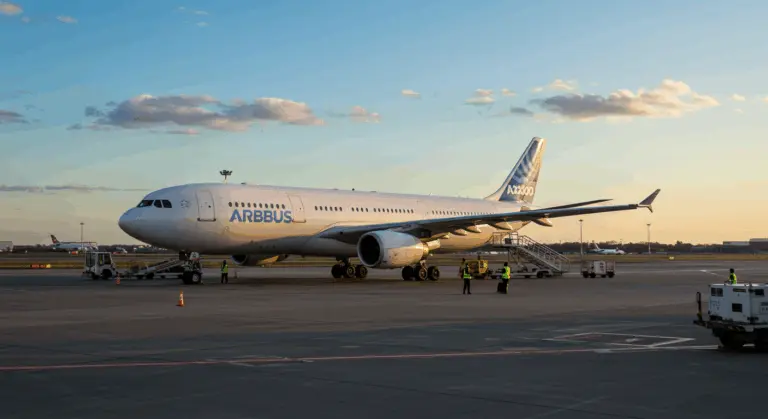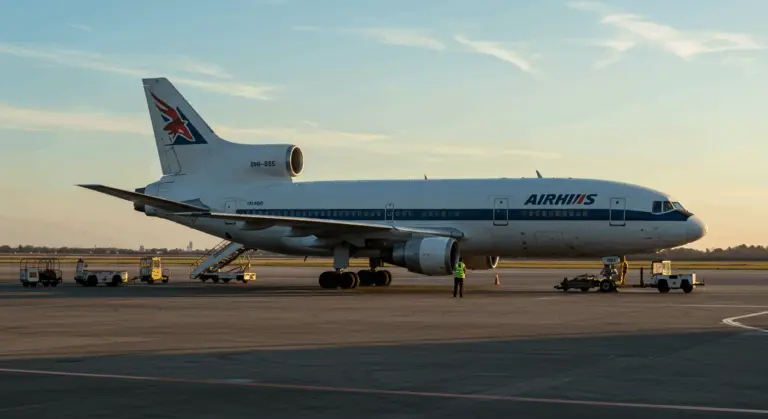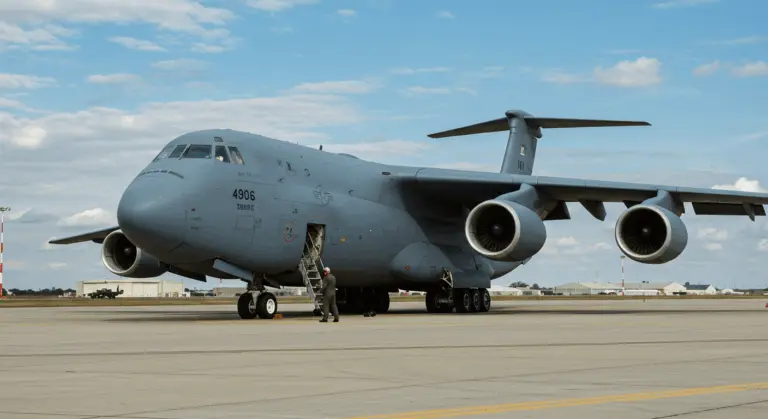Overview of the Bombardier CRJ Series
The Bombardier CRJ (Canad air Regional Jet) Series stands as one of aviation history’s most successful regional jet families. Originally conceived and manufactured by Canadian transportation giant Bombardier (formerly Canad air), these aircraft have woven themselves into the fabric of regional air travel across the globe. The CRJ’s key innovation lies in Its evolution from the Challenger business jet platform—a transformation that birthed a versatile commercial aircraft solution perfectly suited for short to medium-haul routes.
The series encompasses several variants, each designed to address specific market demands while preserving the essential CRJ characteristics of efficiency and reliability. From the pioneering CRJ100/200 models to their larger siblings—the CRJ700, CRJ900, and CRJ1000—this family spans seating capacities from approximately 50 to 104 passengers. This range makes them ideal for regional operations.
Airlines enjoy considerable cabin flexibility with these aircraft. For instance, the CRJ-700 can be configured with multiple classes:
-
First Class: 3 rows (9 recliner seats)
-
Main Cabin Extra: 8 seats (17.3-inch width)
-
Standard Seats: 46 seats (17.3-inch width)
This flexibility allows airlines to customize their aircraft configurations according to precise market demands.
History and Development of the CRJ
The development of the larger CRJ700 series, launched in 1994, emerged as Bombardier’s response to growing competition in the regional jet arena. Key competitors included aircraft such as:
Key Milestones in CRJ Development
The program began in 1991 with the CRJ100’s debut—the inaugural model adapted from the Challenger 600 business jet. This approach would define the CRJ program’s success.
In 1995, Bombardier unveiled the CRJ200, boasting enhanced engines and advanced systems while retaining the proven CRJ100 airframe. This model became very popular among regional carriers. It solidified the CRJ’s strong market position.
The family continued to expand with larger, enhanced models:
-
CRJ900 (2001): Further stretched the fuselage to accommodate up to 90 passengers and incorporated aerodynamic improvements.
-
CRJ1000 (2007): As the largest variant seating up to 104 passengers, it featured enhanced engines and a redesigned cabin with larger overhead bins and windows for an improved passenger experience.
Production concluded in 2020 following Mitsubishi Heavy Industries’ acquisition of the program. Though manufacturing has ended, Mitsubishi continues supporting the global fleet, ensuring these aircraft’s enduring legacy. The CRJ’s nearly three-decade production run transformed regional air travel, demonstrating its significant impact on the industry.
Specifications of Bombardier CRJ Models
The Bombardier CRJ family encompasses several distinct models, each with technical specifications engineered to serve different market segments within regional aviation. Each variant tells its own story of innovation and purpose.
The CRJ series consistently uses General Electric CF34 engines, though specific variants differ by model. The CRJ100/200 aircraft use GE CF34-3A1 and GE CF34-3B1 engines, generating 8,729 LBF of thrust. Meanwhile, the larger CRJ700 and CRJ900 models employ the more robust GE CF34-8C5 series engines, delivering 14,510 LBF of thrust to accommodate their increased dimensions and weight.
The CRJ series showcases a distinctive T-tail design and sleek fuselage that evolved from the Challenger business jet heritage. The CRJ100—the original model—measures 87 ft 10 in (26.77 m) in length with a wingspan of 69 ft 6 in (21.21 m). The CRJ200 maintains identical length but features a slightly expanded wingspan of 76 ft 3 in (23.2 m), optimizing aerodynamic performance.
As the series matured, each subsequent model introduced improvements in passenger capacity, range, and comfort features. They maintained operational commonality with earlier variants—a strategic advantage for airlines seeking fleet expansion with minimal additional training and maintenance requirements.
CRJ700 Series Specifications
The CRJ700 series represents an important evolution within the CRJ family, offering significantly increased passenger capacity compared to the earlier CRJ100/200 models. With maximum seating for 78 passengers, the CRJ700 achieves an optimal balance between the compact original CRJs and the larger variants that would subsequently emerge.
The CRJ700 offers improved performance and better efficiency compared to its predecessors. This is achieved through a stretched fuselage that accommodates additional seating while preserving the CRJ family’s renowned reputation for speed and operating economics.
The CRJ700 introduced several aerodynamic improvements, such as:
-
A redesigned wing with a greater span
-
Enhanced high-lift devices
CRJ900 and CRJ1000 Features
The CRJ900 and CRJ1000 represent the most sophisticated and largest members of the Bombardier CRJ family, with significant improvements over their smaller counterparts. The CRJ900, accommodating up to 90 passengers, features a stretched fuselage, wider wing with additional leading-edge slats, increased wingspan, and a distinctive cathedral tail design that significantly improves stability. A notable feature is the lowered cabin floor, which enhances passenger visibility and comfort throughout the flight experience.
The CRJ900 Next Gen variant introduced key improvements:
-
Fuel Economy: Engine enhancements improved fuel efficiency by approximately 5.5%.
-
Cabin: The redesigned cabin included larger overhead bins for more passenger convenience.
-
Maintenance: Extended service intervals reduced operational downtime for airlines.
The CRJ1000, launched in 2007 as the family’s largest member with capacity for up to 104 passengers, prioritized enhancing the travel experience through innovative features such as:
Both the CRJ900 and CRJ1000 maintain strong commonality with earlier CRJ models. This strategic design philosophy allows airlines to seamlessly integrate these larger aircraft into existing CRJ fleets with minimal additional training requirements for flight crews and maintenance personnel. This commonality has contributed to the commercial success of these larger CRJ variants among regional airlines worldwide.
Operators and Market Presence
The Bombardier CRJ series has established a strong global market presence, with hundreds of aircraft operating across numerous airlines and regions. These versatile regional jets have achieved particular dominance in North American regional aviation, where they function as the operational backbone of many carriers’ fleets. They connect smaller communities to major airline hubs with remarkable efficiency.
In the United States, regional airlines have widely adopted the CRJ series, operating under capacity purchase agreements with major carriers. These strategic arrangements enable major airlines to extend their networks into smaller markets while maintaining brand consistency. The regional partners operate CRJ aircraft adorned in their major airline partner’s livery—a seamless integration of service.
The CRJ’s market influence extends far beyond North America, establishing significant operations across Europe, Asia, and other regions. Lufthansa Citylike emerged among the first operators of the CRJ series, demonstrating the aircraft’s early adoption and transformative impact on global regional air travel dynamics. The CRJ’s exceptional efficiency on short to medium-haul routes attracts airlines worldwide seeking to optimize their operations while maintaining premium jet service.
Despite strong competition—particularly from Embraer’s E-Jet family—the CRJ maintained a strong market position until production concluded in 2020.
Notable Operators of the CRJ Series
Notable North American operators have built extensive fleets of CRJ aircraft (data as of mid-2019):
-
SkyWest Airlines: The largest CRJ700 operator with 143 aircraft.
-
Endeavor Air: Operated 114 CRJ900s for Delta Air Lines.
-
PSA Airlines & Mesa Airlines: Operated CRJs for major partners like American Airlines and United Airlines.
Beyond North America, the CRJ was adopted by numerous international carriers in Europe, Asia, Africa, and South America. Key European operators included:
-
Lufthansa Citylike
-
Air Nostrum
Legacy and Future of the CRJ Series
The Bombardier CRJ series has made a lasting impact on regional aviation, transforming how airlines connect smaller communities to major hubs. As one of history’s most successful regional jet programs, the CRJ set new standards for efficiency, reliability, and passenger experience within the regional segment. Its legacy continues as hundreds of aircraft continue operating worldwide, providing essential air connectivity to communities that might otherwise lack jet service.
Looking forward, the future of regional aviation will likely build on the CRJ’s foundation by incorporating new technologies focused on sustainability, such as:
-
Advanced aerodynamics to reduce drag
-
More efficient engines and alternative propulsion systems
-
Designs that lower emissions and noise
The CRJ’s legacy will continue shaping regional aircraft design and operations for decades ahead. Its success demonstrated the viability of purpose-built regional jets as compelling alternatives to larger mainline aircraft or smaller turboprops. This created an entirely new market segment that continues evolving today. Although production has ceased, the CRJ’s impact continues through its active fleet and its lasting influence on future regional aircraft design.






